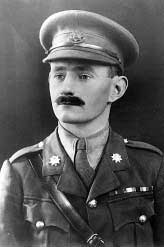Arthur Fleming-Sandes facts for kids
Quick facts for kids
Arthur James Terence Fleming-Sandes
VC
|
|
|---|---|
 |
|
| Birth name | Alfred James Terence Fleming-Sandes |
| Born | 24 June 1894 Tulse Hill, London, England |
| Died | 24 May 1961 (aged 66) Romsey, Hampshire, England |
| Allegiance | |
| Service/ |
|
| Years of service | 1914 - 1919, 1942 - 1944 |
| Rank | Major |
| Unit | Artists' Rifles The East Surrey Regiment |
| Battles/wars | World War I World War II |
| Awards | Order of the Nile |
| Other work | Barrister |
Arthur James Terence Fleming-Sandes (born June 24, 1894 – died May 24, 1961) was an English soldier. He received the Victoria Cross, which is the highest and most respected award for bravery. This special medal is given to soldiers from the United Kingdom and Commonwealth countries. It honors those who show amazing courage when facing the enemy.
Contents
Arthur Fleming-Sandes: A War Hero
Early Life and Joining the War
Arthur Fleming-Sandes was born in London on June 24, 1894. He attended Dulwich College Preparatory School and then King's School, Canterbury. Just one day after World War I began, he joined the army as a private. He served with the Artists' Rifles and was sent to France in October 1914. In May 1915, he became a temporary second lieutenant in The East Surrey Regiment.
Earning the Victoria Cross
Arthur Fleming-Sandes was 21 years old during the First World War. He was a second lieutenant in the 2nd Battalion, The East Surrey Regiment. His brave actions on September 29, 1915, earned him the Victoria Cross.
This happened at a place called the Hohenzollern Redoubt in France. Second Lieutenant Fleming-Sandes was sent to lead a company of soldiers. They were in a very dangerous spot, being attacked by bombs and machine-gun fire. His men were starting to retreat because they were so shaken.
But Arthur Fleming-Sandes didn't give up. He quickly gathered some bombs. Then, he bravely jumped onto a low wall, called a parapet. He was in full view of the German soldiers, who were only about 20 yards away! He started throwing the bombs at them.
Even though he was badly wounded almost right away, he kept going. He continued to move forward and throw bombs until he was wounded again. His incredible courage gave his men new hope. It helped them to fight on and saved the situation.
Today, his Victoria Cross medal is on display. You can see it at the Queen's Royal Surrey Regiment Museum in Clandon Park, Surrey.
Life After the War
After World War I ended, Fleming-Sandes left the Army as a lieutenant. In 1919, he started working for the government in Sudan, helping with education. Later, in 1924, he moved to the political department. He received the Order of the Nile award in 1931.
In 1935, he became a Judge of the Sudan High Court. The next year, he married Dorothea May Weeks. During World War II, from 1942, he served as Judge Advocate-General for the Sudan Defence Force. He retired in 1944 and returned to England. Back in England, he became the chairman of the Pensions Appeal Tribunal for England and Wales until 1948. Arthur Fleming-Sandes passed away on May 24, 1961, at the age of 66.

